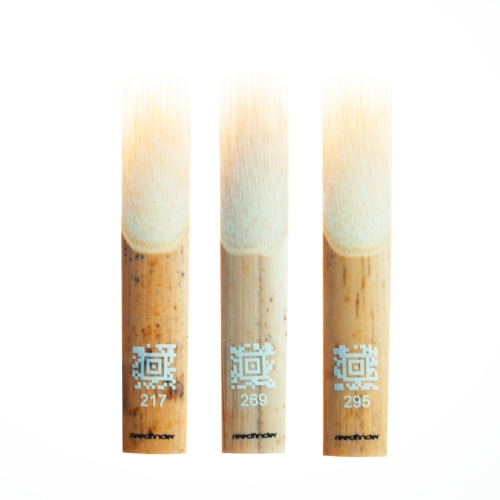Learn Circular Breathing: Quick Step-by-Step Guide
Learn the technique of circular breathing. Expert guide with step-by-step instructions and troubleshooting tips for continous breathing.
What is Circular Breathing?
History
Circular breathing is essential in playing instruments like the didgeridoo, zurna, limbe, launeddas, arghul, and several others from Asia, the Middle East, and beyond. In some regions, mastering this technique is a prerequisite for playing specific instruments, like the saluang bamboo flute from West Sumatra, Indonesia. Moreover, it has even made its way into the repertoire of jazz and classical wind and brass players.
While few classical compositions necessitated circular breathing before the 20th century, its adoption has opened doors for the transposition of pieces originally composed for string instruments. Notable examples include Rafael Méndez's transcription of Paganini's "Moto Perpetuo" for trumpet.
Circular Breathing World Record
Circular breathing has led to awe-inspiring feats in musical endurance. Kenny G set a Guinness World Record in 1997 by sustaining a note for 45 minutes and 47 seconds. This record was surpassed by Vann Burchfield in 2000, who held a note for an impressive 47 minutes and 6 seconds. Mark Atkins, in his Didgeridoo Concerto (1994), played continuously for over 50 minutes. Femi Kuti broke Atkins' record in 2017, playing for a remarkable 51 minutes and 38 seconds.
Kenny G.
Vann Burchfield
Mark Atkins
Femi Kuti
While the category for the 'longest sustained note on a wind or brass instrument' still exists, the circular breathing technique is no longer permitted in the Guinness World Record guidelines.
How to Do Circular Breathing?
1: Understand the Concept
- Circular breathing involves pushing air out through your mouth while inhaling through your nose. It's important to note that you're not actually inhaling and exhaling at the same time; you're using your cheek muscles to push air out while breathing in through your nose.
2: Practice Cheek Air Control
- Put air in your cheeks: Inflate your cheeks with air.
- While holding the air in your cheeks, start breathing in through your nose. This will demonstrate the separation of airflow.
- Squeeze out the air slowly from your cheeks while inhaling through your nose.
- This is a crucial first step in understanding how circular breathing works. Make sure you're comfortable with this before proceeding.
3: Combine Breathing and Exhalation
- Begin exhaling normally.
- Fill your cheeks with air (while exhaling).
- Stop the air from your lungs and squeeze out the air stored in your cheeks as you did in the previous step.
- Repeat the same process and inhale while squeezing the air from the cheeks. This step may require a little more practice.
4: The Switch
- Start with full cheeks, and without any air in lungs. Start squeezing the air slowly and inhale fast.
- As soon as your cheeks have about 30-40 percent air left, slowly start to push the airflow from your diaphragm and slowly squeeze out the rest of the air from the cheeks.
5: The Straw
Congratulations! If you reached this step, you have a good understanding how circular breathing works. Here comes the fun part!

All you need is a half-full glass of water (doesn’t work with half-empty glass).
Practice by blowing bubbles: Blow bubbles through the straw with the technique you learned. This will provide a visual cue for airflow. You can squeeze the straw with your fingers to have more resistance.
6: Transition to the Instrument
- Begin by practicing on long sustained notes. Starting in the lower registers will be easier.
- Gradually introduce circular breathing into melodies and easier passages.
You did it!
Tips for Mastering your Technique
Relaxation is key
- Maintain a relaxed posture and facial muscles. Tension can hinder airflow and make circular breathing more challenging.
- Begin with slow tempos and simple exercises. As you become more comfortable, gradually increase the speed.
Consistency is crucial
- Practice regularly to build muscle memory and strengthen the necessary muscles.
- Dedicate a few minutes each practice session to circular breathing exercises.
Focus on Timing
- The key to circular breathing is the precise timing between inhaling through your nose and releasing air from your cheeks. Develop a rhythmic pattern that matches the musical passage, and practice syncing your breath with the beat.
Consistent Pressure
- Maintain consistent pressure in your cheeks to ensure a continuous stream of air while you inhale through your nose. This prevents gaps or interruptions in sound.
Controlled Inhalation:
- Practice taking quick, efficient inhalations through your nose, ensuring that they are not too forceful or disruptive to your embouchure.
Troubleshooting Common Challenges
Air leakage
- By practicing regularly, you will strengthen your embouchure.
Not enough air
- Use a metronome and develop a rythm for inhalation and squeezing.
- You don't have to take a full breath while circular breathing. Try to take smaller, faster ones.
There is a little break in the sound while switching from cheeks back to the lung
- Try to start the lung airflow before your cheeks run out of air.
- Try maintaining a similar tongue position, don’t drop it or pull it back too much to the back of your throat.
- While switching between inhalation and exhalation, imagine saying a gentle "ghh" sound.
Intonation problems
- Try the cheek squeezing seperately with your instrument. Try to maintain the same lip pressure.
- Keep your tongue relatively close to the reed.
Do you like this article?
Thanks for your feedback

World’s #1
Reed Recommendation System
We believe every musician deserves a reed that matches their unique style and sound. Each reed is selected with cutting-edge AI and machine learning based on your playing feedback.
Should You Try the Benz-Tec Digital Reed Tester? I've tested it for you!
Check out the best clarinet jokes to brighten your day!
Struggling to hit the right notes? Your instrument might be the culprit! Learn how to fix intonation problems and stay in-tune.
Unleash the full potential of your clarinet with our exclusive care guide. Elevate your playing with tips that ensure your instrument remains in perfect condition.
Here are the top 7 picks of best applications to download for classical musicians. Tuners, Metronomes and more.
Buffet Crampon's latest innovation: the Prodige Pocket Clarinet. Is it really the best instrument for young clarinetists? Check out our review!
Discover the best clarinet mouthpieces! Check out our reviews and recommendations for Bb and Bass clarinet.
A groundbreaking innovation of Buffet Carmpon: Clarimate. This is our honest review about its innovative features and real-world performance. Is it for you?
Discover the role of clarinet ligatures in achieving optimal sound and control. Explore various ligature types, materials, and techniques to enhance your clarinet playing experience.
Discover the Vandoren VK1 clarinet reed, a breakthrough in synthetic reed technology. Experience stability, durability, and consistent performance.

